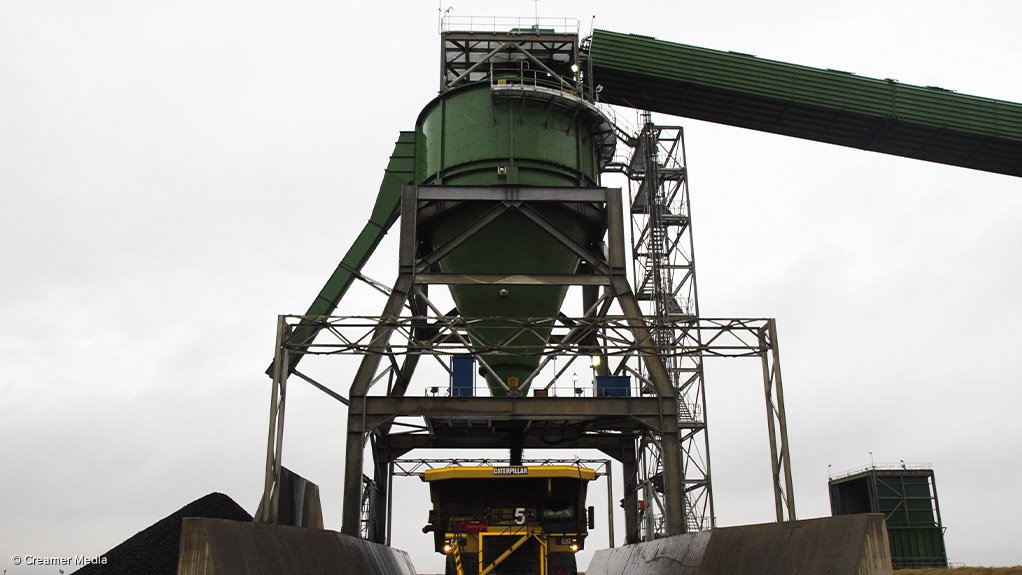Smart digitalisation an urgent problem


MATERIAL MATTERS It is vital to have models that predict potential problems as well as maintenance requirements
Photo by Creamer Media
Smart technology-enabled digitalisation poses a significant challenge for South Africa’s materials handling and logistics companies who fail to adapt, especially in a market where the country’s big mining players seek to realise the ‘mine of tomorrow’, says African artificial intelligence (AI) software and solutions company Cortex Logic founder Dr Jacques Ludik, also Cortex Group CEO.
“AI-enabled digitalisation is a disruptive force and, like any other company that is not becoming data-driven, they will be disrupted, left behind and fail to be competitive in the global economy. “This is happening in all industries,” he warns, noting that local companies are therefore reorganising themselves to take advantage of the opportunity.
Where the Third Industrial Revolution was using electronics and information technology to automate production, the Fourth Industrial Revolution (4IR), or the smart technology era, is impacting on all disciplines, economies and industries by building on the Third Digital Revolution to create smart automation. This era is characterised by a fusion of technologies that is blurring the lines between the physical, digital, and biological spheres. Further, the speed of technology change in the smart technology era is happening at exponential rates with a range of exponential smart technologies, such as AI, Internet of Things (IoT), smart sensors, blockchain, virtual reality and augmented reality, that can be combined to increase operational efficiency and effectiveness, increase productivity and revenue, reduce risks, lower costs, enable faster, better and more proactive decisions, and even generate new revenue growth opportunities. “In this new era, it is not the big fish which eats the small fish, but the fast fish which eats the slow fish,” says Ludik.
Despite living in the age of smart technology, the South African mining industry has not fully embraced the 4IR. Although the mining industry has been using sensor and lab data on a process control level, manufacturing execution systems on a manufacturing operations management level, and enterprise resource planning systems on the business planning and logistics level for the last few decades, there are significant smart automation-related opportunities to increase throughput, quality, yield, safety and productivity and reduce risk. Smart automation involves the use of IoT and smart sensors for improved instrumentation and the application of AI and machine learning on all available structured and unstructured data to unlock business value.
As the instrumentation of technology is advanced, everything is becoming software defined and models can be built to act as digital twins of processes, equipment, plants and even supply chains, which, in turn, provides the opportunity to take the optimisation of these systems to the next level to further improve business outcomes.
The big problem typically posed by mineral processing plants when attempting to use data to realise improved efficiencies with regard to materials handling processes, is to understand and reduce the causes of variation in process, equipment and business key performance indicators (KPIs), as variation makes it difficult to optimise.
“With process performance enhancement and predictive maintenance solutions, even improvements of between 1% and 5% in business KPIs, such as throughput, quality and yield, could result in a gain of millions of dollars.”
Subsequently, Cortex Logic has developed a few solutions in the areas of process performance enhancements, predictive maintenance and troubleshooting of equipment failures, applying models built using real-time information from sensors.
South African companies realise that data is the new gold, Ludik says, but he notes that there is still a gap in how to use it effectively.
“What’s not being used properly is the unstructured data, such as text, audio and video. AI and machine learning toolboxes have been enriched tremendously in the last decade. “Machine learning can, for example, be applied in safety and security-related applications for identifying and tracking people in the work environment and detecting anomalous behaviour. Other applications include smart sensors that use machine learning for pattern recognition on video and audio feeds which can complement the traditional sensors used to control process and equipment,” Ludik advances.
He further notes that the more instrumentation is used in the supply chain, the more data will be available to build models and implement optimisation of aspects such as logistics. “There are incredible opportunities here and there aren’t many companies globally tapping into this.”
The big problem is that data is kept in silos and to automate processes, rapid access to all available data is needed. Therefore, it is critical that data is organised properly.
However, there are many legacy systems in the industrial world and, subsequently, a lot of data infrastructure is old, Ludik points out. This infrastructure works for supervisory control and data acquisition systems and balanced technology extended systems, but it needs to be adapted to realise the advantage of being able to access all available data. However, with the advent of IoT and smart sensors, there are no excuses any more, he says.
Comments
Press Office
Announcements
What's On
Subscribe to improve your user experience...
Option 1 (equivalent of R125 a month):
Receive a weekly copy of Creamer Media's Engineering News & Mining Weekly magazine
(print copy for those in South Africa and e-magazine for those outside of South Africa)
Receive daily email newsletters
Access to full search results
Access archive of magazine back copies
Access to Projects in Progress
Access to ONE Research Report of your choice in PDF format
Option 2 (equivalent of R375 a month):
All benefits from Option 1
PLUS
Access to Creamer Media's Research Channel Africa for ALL Research Reports, in PDF format, on various industrial and mining sectors
including Electricity; Water; Energy Transition; Hydrogen; Roads, Rail and Ports; Coal; Gold; Platinum; Battery Metals; etc.
Already a subscriber?
Forgotten your password?
Receive weekly copy of Creamer Media's Engineering News & Mining Weekly magazine (print copy for those in South Africa and e-magazine for those outside of South Africa)
➕
Recieve daily email newsletters
➕
Access to full search results
➕
Access archive of magazine back copies
➕
Access to Projects in Progress
➕
Access to ONE Research Report of your choice in PDF format
RESEARCH CHANNEL AFRICA
R4500 (equivalent of R375 a month)
SUBSCRIBEAll benefits from Option 1
➕
Access to Creamer Media's Research Channel Africa for ALL Research Reports on various industrial and mining sectors, in PDF format, including on:
Electricity
➕
Water
➕
Energy Transition
➕
Hydrogen
➕
Roads, Rail and Ports
➕
Coal
➕
Gold
➕
Platinum
➕
Battery Metals
➕
etc.
Receive all benefits from Option 1 or Option 2 delivered to numerous people at your company
➕
Multiple User names and Passwords for simultaneous log-ins
➕
Intranet integration access to all in your organisation



















